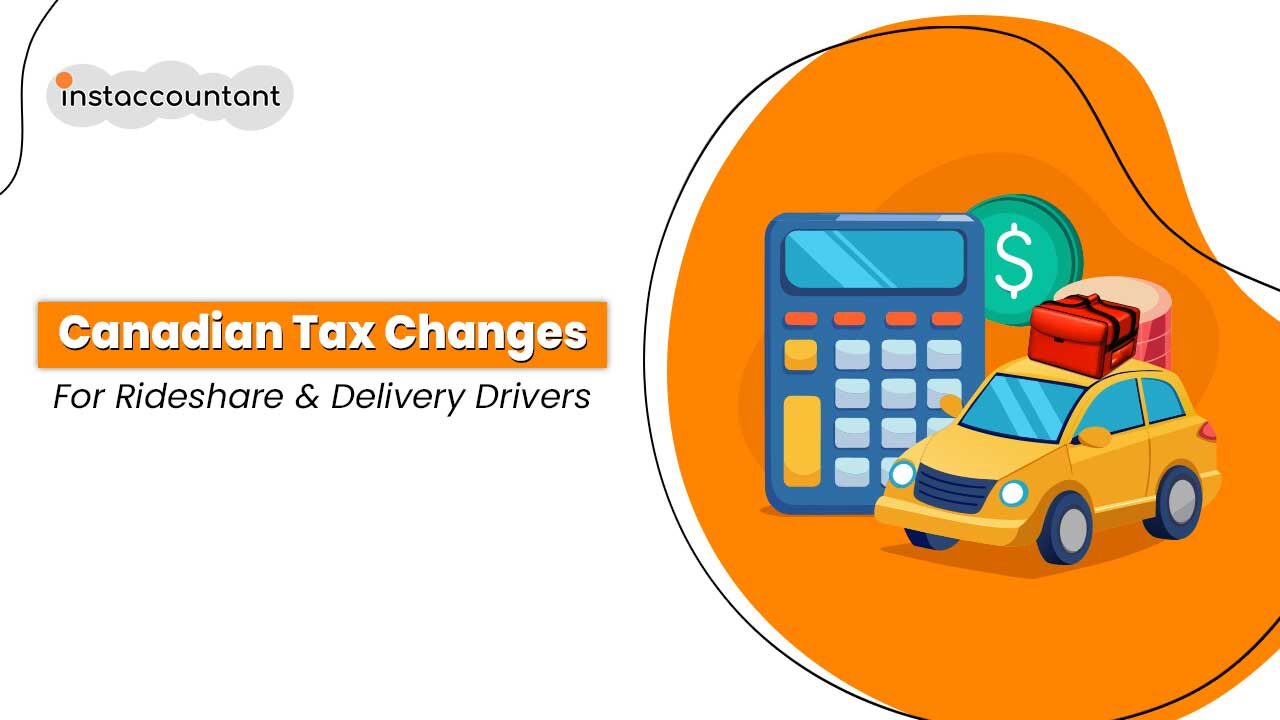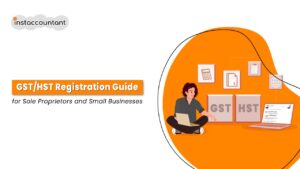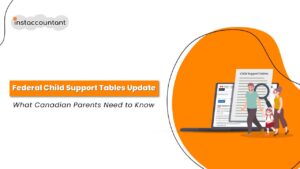As Canada’s platform economy continues to thrive, rideshare and delivery services like Uber, Lyft, UberEats, SkipTheDishes, and DoorDash are creating exciting income opportunities for self-employed individuals. However, with these opportunities come unique tax obligations that every driver must navigate. As we approach the 2025 tax season, it’s essential for Canadian rideshare and delivery drivers to understand their income tax and GST/HST requirements to avoid pitfalls and maximize their earnings.
This guide provides the latest CRA updates and actionable tax tips for Canadian drivers, ensuring compliance and helping you make the most of your earnings.
2024 Tax Rules for Rideshare Drivers in Canada
Ridesharing involves providing passenger transportation services through apps like Uber and Lyft. As self-employed individuals, rideshare drivers have specific income tax and GST/HST obligations that differ from traditional employees.
Income Tax Obligations for Rideshare Drivers
All income earned from ridesharing, including tips, must be reported on your personal income tax return (T1) using the T2125 (Statement of Business or Professional Activities) form. Drivers can claim several business expenses related to their ridesharing activities, such as:
- Vehicle operating expenses (gas, insurance, repairs)
- Depreciation on the vehicle (capital cost allowance)
- Licensing fees
- Cell phone and data charges used for business purposes
Maintaining accurate records of income and expenses is essential. CRA auditors will expect to see receipts (whether digital or physical) and mileage logs to substantiate any deductions.
GST/HST Obligations for Rideshare Drivers
Rideshare drivers must register for a GST/HST account upon earning income since all commercial passenger transportation services are taxable. GST/HST must be charged on every fare, and drivers can claim input tax credits (ITCs) for business-related expenses such as fuel, repairs or insurance.
Pro Tip: Unlike other small businesses, rideshare drivers must register for GST/HST even if their earnings are below the $30,000 small supplier threshold. Failing to do so may result in penalties.
2024 Tax Rules for Delivery Drivers in Canada
Delivery services through apps like UberEats, SkipTheDishes, and DoorDash classify drivers as self-employed contractors. While similar to ridesharing, delivery services have their own income tax and GST/HST requirements.
Income Tax Obligations for Delivery Drivers
All income from delivery services must be reported on your income tax return. Delivery drivers can also claim business expenses, including:
- Mileage or fuel costs
- Delivery bags or equipment
- Cell phone expenses (for business use)
- App subscription fees or service charges
Advanced Tip: Keep a mileage log to track business kilometers, as the CRA requires accurate records to validate vehicle expense deductions.
GST/HST Obligations for Delivery Drivers
Delivery drivers must register for a GST/HST account if their earnings exceed $30,000 within four consecutive calendar quarters. Drivers can also choose to register voluntarily to claim ITCs on business expenses.
Pro Tip: If you work as both a rideshare and delivery driver, you must combine earnings from both when calculating whether you exceed the $30,000 small supplier threshold.
Key Differences in Tax Obligations for Rideshare vs. Delivery Drivers
Knowing the differences in tax obligations between rideshare and delivery service drivers is essential for compliance and maximizing deductions. Here’s a quick comparison:
| Tax Aspect | Rideshare Drivers | Delivery Drivers | Both Services |
|---|---|---|---|
| Income Tax | Report all income; claim related expenses | Report all income; claim related expenses | Report income from both services; claim expenses |
| GST/HST | Must register, collect, and remit GST/HST | Register if earnings exceed $30,000 (or voluntarily) | Must collect and remit GST/HST on all income |
Expert Tip: If your combined income exceeds $30,000, your GST/HST registration must cover both services to maximize Input tax credits (ITC) claims.
Importance of Record-Keeping for Rideshare and Delivery Drivers
Keeping accurate records is vital for proper reporting of income and expenses. Use Zoombooks app designed for self-employed individuals like you to:
- Track income from multiple sources
- Document deductible expenses
- Organize GST/HST paid and collected
Save all receipts, mileage logs, and other supporting documents for at least six years, as required by the CRA.
Correcting Tax Mistakes with the CRA
If you previously missed reporting income or remitting GST/HST, it’s crucial to address these issues. The CRA’s Voluntary Disclosures Program (VDP) allows individuals to correct tax issues without facing prosecution. Options for correcting past tax mistakes include:
- Requesting changes to income tax returns for unreported income
- Adjusting GST/HST returns to correct unpaid amounts
- Applying to the VDP to reduce penalties and interest on late payments
Correcting tax filings early helps avoid additional penalties and interest. Consulting a tax professional who specializes in rideshare and delivery taxes can be very beneficial.
Conclusion
Understanding your tax obligations as a Canadian rideshare or delivery driver is essential for financial stability. Staying informed about 2024 CRA updates for income tax and GST/HST, as well as maintaining meticulous records, will ensure you’re maximizing deductions and remaining compliant. Whether driving part-time or full-time, proactive tax management helps avoid costly surprises during tax season and supports smoother business operations.





